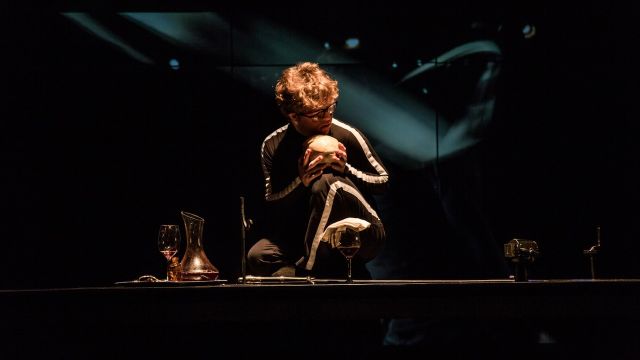Hamlet
This wonderful troupe from Peru’s Teatro La Plaza takes Shakespeare’s Hamlet and uses it as a framework for their own purposes. They play with it, push at it, reinterpret its characters and its very meaning. To do all that, they use every theatrical trick and mode – comedy, tragedy, clowning, dress-up type costumes, dance (choreography by Mirella Carbone), pop songs and rap songs, dramatic scenes, direct address to the audience and audience participation, lighting effects by Jesus Reyes – as well as images from Lucho Soldevilla projected on a huge screen.
The writer/director is Chela de Ferrari – with associates Claudia Tangoa, Jonathan Oliveros and Luis Alberto Leon. In their version, most of Shakespeare’s characters are there – Hamlet himself, Claudius, Gertrude, Ophelia, Polonius, even Horatio gets a look in. But the whole play is performed in Spanish with English surtitles projected on the top of that huge screen. There’s also the Player King, the Player Queen – played for the broadest comedy - and the Murderer, a volunteer from the audience – and three brave volunteer audience members who play the moon and bushes in the garden. So, even the murder becomes farcical.
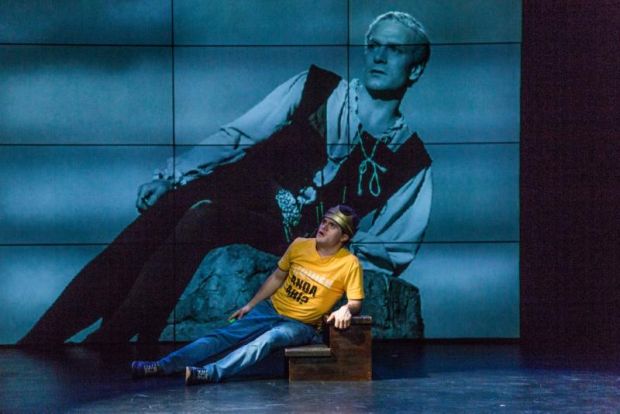
But in this production, everyone is Hamlet (that is very much the point) sooner or later, and the crown is a crucial prop passed or bestowed on each of the characters. Otherwise, the cast take on the other roles as needed: Octavio Bernaza (a powerful presence), Jaime Cruz, Lucas Demarchi (lithe, a dreamer), Manuel Garcia, Diana Gutierrez (sweet but feisty), Cristina Leon Barandiaran, who’s sometimes the Narrator and TV interviewer (she dominates the stage), Ximena Rodriguez (slyly comic and a great dancer) and Alvaro Toledo (a very funny clown).
But first, the actors must acknowledge what Hamlet is – or has been up to now - because if you’re going to deconstruct the thing, you better say what it is. So, a patchwork of the famous actors who have played the gloomy Dane is projected on the screen.
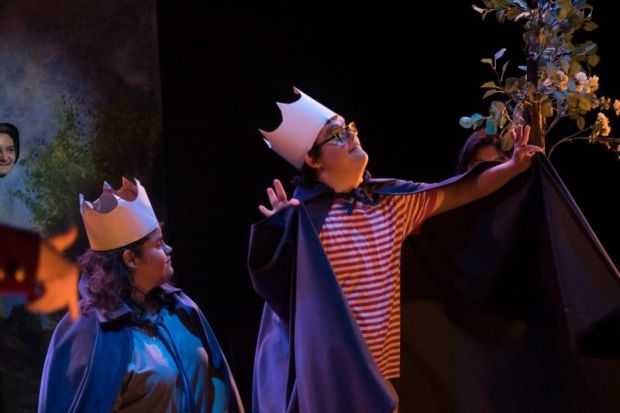
That seems very daunting because this particular troupe of actors from Peru are all neurodivergent – Downs Syndrome people – eight of them, all shapes and sizes, dressed in T-shirts, jeans and sneakers – everyday street wear. The actor ‘presenting’ the play’s history has only to look at the audience, as if to say, ‘Well?’ for the irony to get a laugh. But it’s a dead serious, beautiful set-up for what follows.
And then, to make sure we’ve really got it, we get a quite lengthy clip from one of the most famous movie Hamlets of all: Laurence Olivier in 1948, in B&W, lounging on a rock, performing – in ponderous mode - one of the most famous speeches of all, ‘To be, or not to be...’
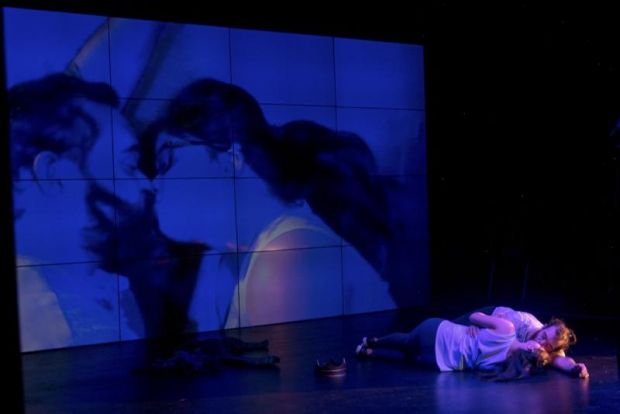
Here is another set-up and it’s the key one because ‘to be or not to be’ is the point, the crux of the whole thing. But not to live or to die – rather to be what one is, oneself, different but equal, visible, worthy of existence and acknowledgement - or to hide, be judged, be ashamed and disappear into the shadows. And so, to dramatise that very question, they proceed to perform Hamlet... Each in their own way.
And that means deliberately skewed interpretations and different emphases. So, Ofelia is not so meek. Why shouldn’t Hamlet give her gifts? The play lingers over her preparations for her death so that it is an on-stage tragedy rather than being all about Hamlet’s response – and her brother’s rage. (Her brother’s not even in this show.) After Claudio’s guilt is confirmed by the players, he’s not guilty: instead of prayer, he sings his favourite pop song and dances in bachata style. Hamlet is not so heroic or tragic; he’s a poetic soul who just wants to be who he is... But In fact, the whole emphasis and defiant assertion of this play is not on the solitary hero, but on the community and solidarity of these performers as a company and as representative ‘outsiders’.
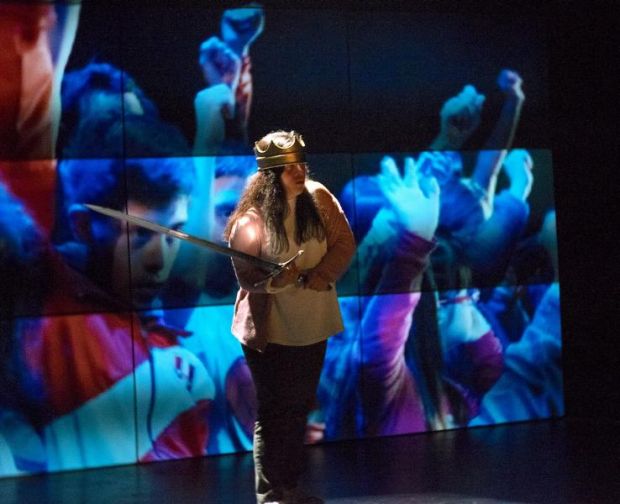
This is exciting theatre, constantly inventive, changing style and mode at speed, involving the audience at every point. What this show does and affirms, and asserts is the individuality, humour and talent of all its cast. The end, with all on stage as themselves – each one taking a bow in turn – is moving and exhilarating.
Michael Brindley
Subscribe to our E-Newsletter, buy our latest print edition or find a Performing Arts book at Book Nook.

